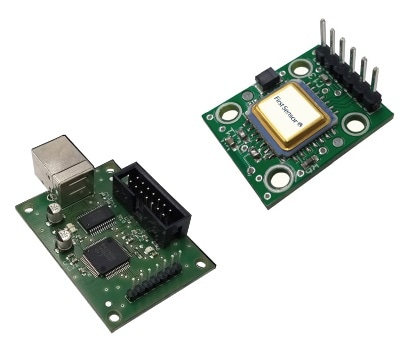First Sensor features an extremely innovative technology system for manufacturing high-precision inertial sensors for condition monitoring, geo-engineering or navigation applications. The MEMS sensors allow for versatile customization to fit the specific application requirements of the user.
Inclinometers and Accelerometers
The capacitive inclinometers and accelerometers are based on single crystal silicon sensor elements and use advanced micromachining technology to realize large signal-to-noise ratios and superior stability over temperature. Thus, they are able to detect very small changes in acceleration or inclination. Because of high aspect ratio microstructures (HARMS), the sensors feature ultra-low cross axis sensitivities. Additionally, the patented highly flexible Air gap Insulated Microstructures (AIM) technology reduces parasitic capacitances.
All inertial sensors can be tailored, and can be adapted or developed to fit specific needs or applications.
Performance Characteristics
Technical Specifications
| Inclinometer parameter |
SI-11.S1.C-30 |
Unit |
| Measurement range |
±30 |
° |
| Resolution @ 10 Hz |
< 0.0015 |
° |
| Scale factor (repeatability) |
±35 |
ppm |
| Scale factor (temperature coefficient) |
±50 |
ppm/K |
| Bias (repeatability) |
±0.0030 |
° |
| Bias (temperature coefficient) |
±0.0025 |
°/K |
| Noise density |
< 0.0004 |
°/√Hz |
| Measuring frequency |
1600 |
Hz |
| Digital interface |
SPI |
| Operating temperature |
-40 … 85 |
°C |
Technical Specifications
| Parameter Accelerometer |
SA-12.S1.C-3 |
SA-13.S1.C-8 |
SA-14.S1.C-15 |
Unit |
| Measurement range |
±3 |
±8 |
±15 |
g |
| Resolution @ 10 Hz |
< 40 |
< 65 |
< 95 |
µg |
| Scale factor (repeatability) |
±35 |
±50 |
±50 |
ppm |
| Scale factor (temperature coefficient) |
±50 |
±50 |
±50 |
ppm/K |
| Bias (repeatability) |
±60 |
±150 |
±200 |
µg |
| Bias (temperature coefficient) |
±130 |
±420 |
±700 |
µg/K |
| Noise density |
< 12 |
< 20 |
< 30 |
µg/vHz |
| Measuring frequency |
1600 |
1600 |
1600 |
Hz |
| Digital interface |
SPI |
SPI |
SPI |
| Operating temperature |
-40 … 85 |
-40 … 85 |
-40 … 85 |
°C |
The SI & SA evaluation kits are inertial sensor modules including sensor board, control board and software for simple read-out and quick assessment of the sensor data.

Benefits of the AIM technology
- Thin-film free mechanical components, single crystal silicon based
- Minimizing of parasitic capacitances due to insulation of the functional components by air gap
- Ultra-low cross axis sensitivity due to HARMS technology
- Full dry processing
- Excellent thermal performance
- Large signal-to-noise ratio
- Mechanical over-damped to reduce parasitic signals
- Customer specific measurement ranges due to flexible adjustment of mass, spring and damping
Features of the Sensor System
- Dual axis measurement
- Superior stability over temperature
- High resolution ADC offering more than 100 dB dynamic range
- Digital SPI interface
- Configurable bandwidth output filter
- Shock survival 1500 g
- Customized sensor solutions for packaging and signal processing
- Hermetically sealed package
Applications
- Navigation
- Geo-engineering
- Security systems
- Condition monitoring
- Tilt sensing and leveling
- Industrial applications
- Platform control and stabilization